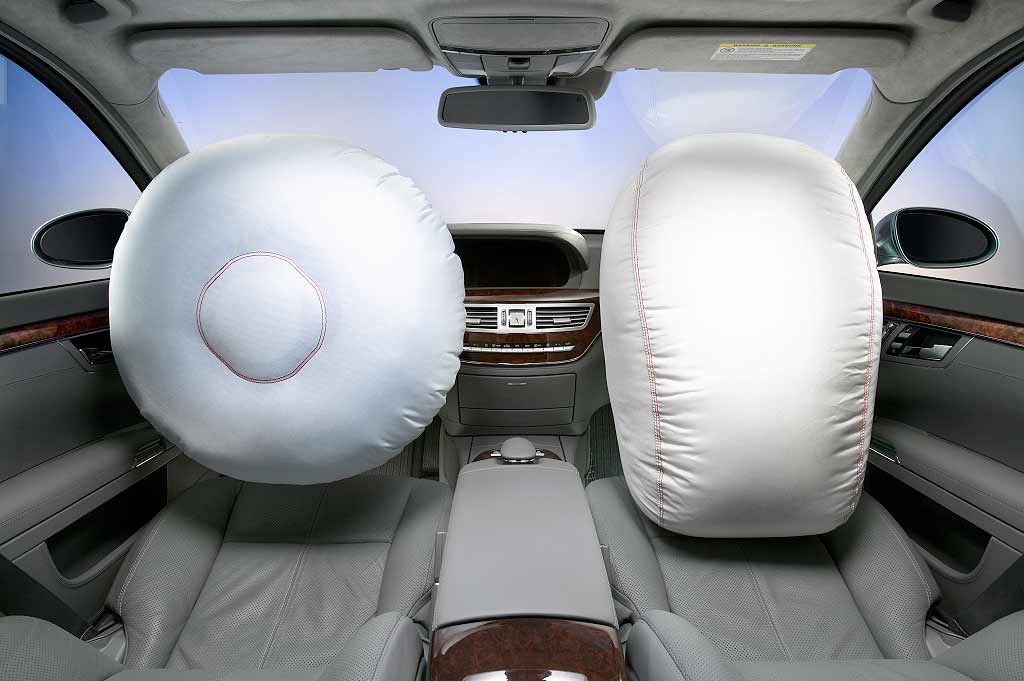Car front airbags are inflatable safety devices that are designed to protect the driver and front passenger in the event of a frontal collision. They are located in the steering wheel and dashboard, and deploy within milliseconds of an impact, providing a cushion of protection for the occupants' heads and chests.
Car front airbags are equipped with sensors that detect the impact of a collision. When an impact is detected, the sensors send a signal to the airbag control unit. The airbag control unit then triggers the front airbags to inflate.
The front airbags inflate through small openings in the steering wheel and dashboard. As the front airbags inflate, they push the driver and front passenger away from the steering wheel and dashboard and towards the center of the vehicle. This helps to reduce the risk of the driver and front passenger hitting the steering wheel, dashboard, or other hard surfaces in the vehicle.
Call Us: (571) 417-5717Car front airbags are a fundamental component of a vehicle's safety system, designed to protect the driver and front passenger during frontal collisions. As one of the earliest airbag types to be widely implemented, front airbags have significantly contributed to the reduction of fatalities and serious injuries in car accidents. This comprehensive guide explores the functionality, benefits, types, maintenance, and considerations for front airbags, highlighting their importance in modern automotive safety.
Car front airbags are designed to deploy in the event of a frontal collision, providing a cushioning barrier between the occupant and the vehicle’s interior, such as the steering wheel, dashboard, or windshield. These airbags are part of the Supplemental Restraint System (SRS), which complements seat belts to enhance occupant protection.
Activation Mechanism - Front airbags are equipped with sensors that detect the severity and direction of a collision. When a significant frontal impact is detected, these sensors trigger the inflation mechanism. A rapid chemical reaction occurs, producing gas that inflates the airbag within milliseconds, creating a protective cushion between the occupant and the vehicle's interior.
Deployment Process - Upon deployment, front airbags inflate at high speed to provide immediate protection. The deployment process involves several key steps:
Driver Airbags - Driver airbags are installed in the steering wheel and deploy to protect the driver in a frontal collision. They are specifically designed to cushion the driver's upper body, head, and neck.
Passenger Airbags - Passenger airbags are located in the dashboard and deploy to protect the front-seat passenger. These airbags are larger than driver airbags to cover a broader area and provide adequate protection for the passenger.
Advanced Airbags - Modern vehicles are equipped with advanced airbags that adjust their deployment based on the severity of the collision, the size and position of the occupant, and whether the occupant is wearing a seat belt. These airbags enhance safety by providing tailored protection in various crash scenarios.

Reduction in Fatalities - Front airbags have been shown to reduce fatalities in frontal crashes by approximately 29% for drivers and 32% for front-seat passengers. This significant reduction highlights the life-saving potential of airbags in severe collisions.
Protection Against Serious Injuries - Front airbags help mitigate severe injuries by cushioning the impact and preventing direct contact with hard surfaces. They protect vital areas such as the head, neck, and chest, reducing the risk of traumatic injuries and internal damage.
Complementary to Seat Belts - While seat belts are essential for occupant safety, front airbags provide additional protection by reducing the force exerted on the body during a collision. This complementary action enhances overall safety and reduces the likelihood of injuries.